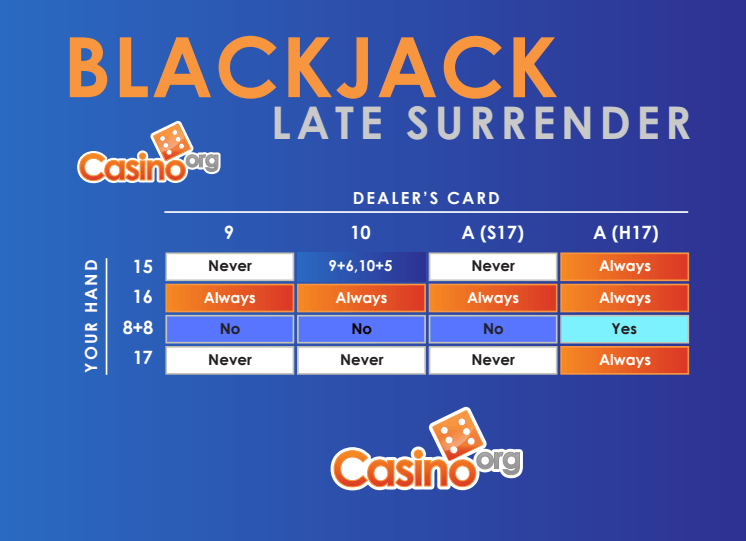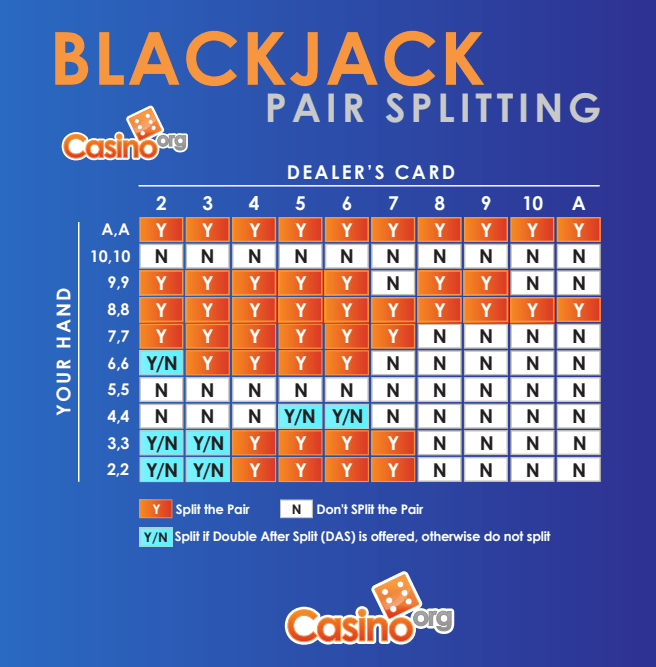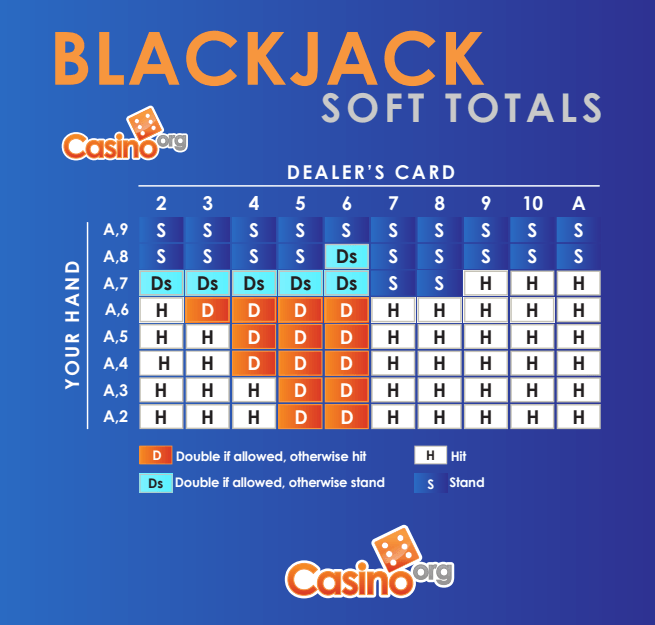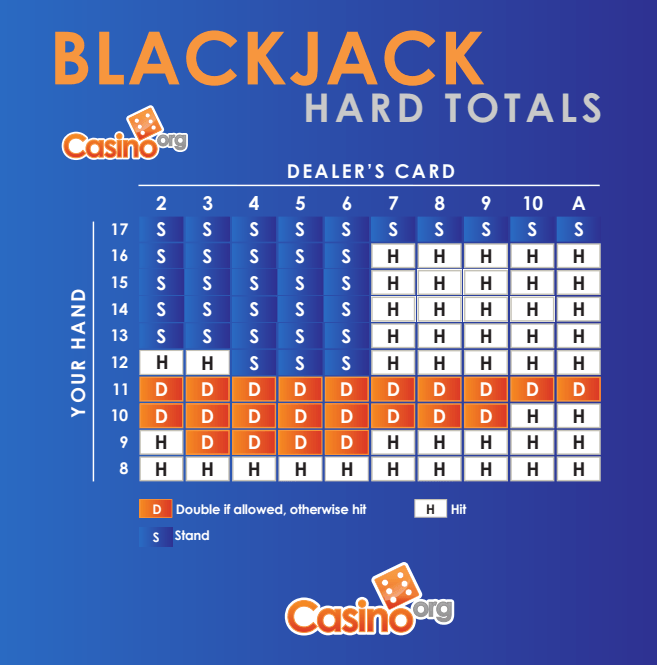Mastering Blackjack: Essential Strategy Charts for Smart Play
Every hand you play in blackjack can be optimized with mathematical precision. Blackjack strategy charts empower players to make the optimal choice at every turn, minimizing the house edge and boosting your odds of success at the tables. This guide walks you through the core charts for surrender, splitting, soft totals, and hard totals-plus how to read and use these strategic tools whether you’re playing in a casino or online.
How to Navigate Blackjack Strategy Charts
To get the most from a blackjack strategy chart, follow these steps in order:
- First, determine if surrender is an option for your current hand.
- If you have a pair, consult the split chart to decide if you should split.
- If your hand contains an ace (a "soft" total), review the soft totals chart for guidance on hitting, standing, or doubling down.
- For hands without an ace (a "hard" total), finish by referring to the hard totals chart for the best move.
When you're ready to play, consider downloading printable charts for easy access at the table.
When to Surrender: Blackjack Surrender Strategy Explained
Surrendering in blackjack means giving up your hand right after your first two cards in exchange for only losing half your bet. Most casinos that offer this feature provide 'Late Surrender'-which comes after the dealer checks for blackjack. The less common 'Early Surrender' is available before the dealer checks, potentially giving an even bigger edge to the player.
- Surrender with a hard 15 versus a dealer 10-unless your 15 is a 7 and 8 combination.
- With any hard 16 (but not two 8s), surrender if the dealer shows 9, 10, or ace.
- If holding two 8s, only surrender against a dealer ace when the rules force the dealer to hit on soft 17.
- Always surrender a hard 17 when facing a dealer ace.
Splitting Pairs: The Blackjack Pair Splitting Chart
Pair splitting gives players a chance to turn a weak hand into a winning one, but the rules can vary depending on whether the game allows 'Double After Split' (DAS). Only split hands marked for DAS if the game permits doubling after splitting pairs; otherwise, follow the regular hit or stand rules for your new hands.
- Always split aces and eights.
- Split nines against all dealer cards except 7, 10, or ace.
- Split sevens against the dealer’s 2 through 7.
- Split sixes against 2 through 6; only split against a 2 if DAS is allowed.
- Never split a pair of fives-instead, play as a hard 10.
- Split fours only against a dealer 5 or 6 and only if you can Double After Split.
- Split twos and threes against dealer 2 and 3 if DAS is available, and always split against 4, 5, or 6.
Making the Right Move with Soft Totals
Soft totals are hands containing an ace counted as 11. Before applying soft totals strategy, confirm whether you can double on combinations other than just 10 or 11. If a game doesn’t allow this flexibility, consider looking for a table with friendlier rules to maximize gains.
- With A-2 or A-3, double against dealer 5 or 6; otherwise, hit.
- A-4 or A-5, double down versus 4, 5, or 6; otherwise, hit.
- With A-6, double if the dealer shows 3 through 6; otherwise, hit.
- A-7: double versus 2 through 6, stand if the dealer shows 7 or 8, otherwise hit.
- A-8: double against a dealer 6, stand for every other card.
- A-9: always stand regardless of the dealer’s card.
Understanding Hard Totals: To Hit or Stand?
A hard total is any blackjack hand without an ace valued as 11. With hands totalling 5-8, always take a hit-there’s no risk of busting and your hand needs improvement. Starting with 9, hard totals strategy comes into play, including when to double down for the most value.
- With a total of 9, double down against dealer 3 to 6; otherwise, hit.
- For a hard 10, double if the dealer shows a 2 through 9; if not, hit.
- Always double a hard 11, regardless of the dealer’s card.
- At 12, stand if the dealer shows 4, 5, or 6-otherwise, hit.
- With 13, 14, 15, or 16, stand versus dealer 2 to 6; hit against 7 or higher.
- Always stand on hard totals of 17 or above.
Get Your Free Printable Blackjack Strategy Charts
Take these strategy charts with you to any table, whether you’re playing online or at a casino. Download and print each chart for quick reference:
- Late Surrender Chart (PDF)
- Pair Splitting Chart (PDF)
- Playing Soft Hands Chart (PDF)
- Playing Hard Hands Chart (PDF)
Blackjack Strategy Charts: Frequently Asked Questions
What is a blackjack strategy chart?
A blackjack strategy chart is a quick-reference guide showing the statistically best move (hit, stand, split, double, or surrender) for every possible hand scenario against the dealer’s up card. These charts are developed from rigorous mathematical analysis to minimize the house advantage.
How do you use a blackjack chart?
To use a blackjack strategy chart, follow a sequence: first, consider surrender (if available), then whether to split pairs, then soft totals, and finally hard totals. The dealer’s face-up card will be found along the top of the chart, and your cards are listed on the left side. The chart indicates the best action for each situation.
Are you allowed to use strategy charts in a casino?
Yes, players are welcome to use printed strategy charts while playing at most casinos or online blackjack tables. Relying on these tools helps ensure consistent and optimal decisions throughout your gaming session.
Is there one “best” blackjack strategy?
The optimal strategy may shift based on specific game variations: the number of decks in play and house rules (like dealer hitting on soft 17, double-down restrictions, etc.) can require minor tweaks to your approach, so make sure you’re using a chart tailored to your game’s rules.
Do you always hit 12 in blackjack?
Not always-the correct play with a hard 12 depends on the dealer’s up card. For instance, you should stand when the dealer shows 4, 5, or 6, but hit against all other dealer cards, according to standard strategy.
Ready to test your knowledge? Practice with these charts on free blackjack games or try your skills in live and online casinos. Having strategy charts handy doesn’t just help beginners-seasoned players rely on them too to keep their edge sharp.

















